Exploring the Versatility of 22 cm Glass Covers in Cooking
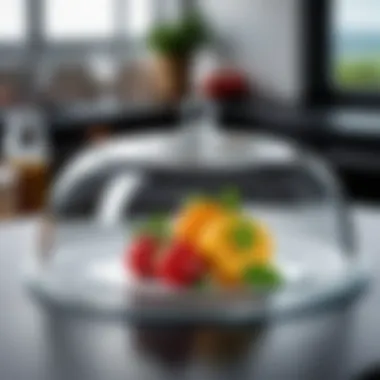

Intro
The world of culinary tools is vast and multifaceted, with each item serving a unique purpose to enhance food preparation and storage. Among these tools, the 22 cm glass cover stands out for its versatility and practicality. This article offers a detailed examination of the advantages these covers bring to the kitchen. It will also guide readers in making informed choices about their selection, highlighting key criteria to consider for quality and performance.
Moreover, the implications of these covers on kitchen efficiency and sustainability will be explored. This discussion aims to resonate with students, young professionals, families with children, and budget-conscious individuals.
Актуальные акции и скидки
Обзор текущих предложений
In the realm of glass covers, various brands often offer promotions and discounts. Keeping up-to-date with current offers can result in considerable savings. Websites like Facebook and Reddit can be useful for finding shared posts about ongoing sales.
One can also subscribe to newsletters from popular kitchenware retailers for exclusive deals. These subscriptions often include notifications about limited-time discounts and seasonal sales, allowing consumers to make attractive purchases.
Специальные предложения от популярных брендов
Certain brands are well-known for producing high-quality glass covers, such as Anchor Hocking, Pyrex, and Borosil. They periodically launch special deals that can make investing in kitchen essentials more affordable. Consumers should pay attention to these offers, especially during holiday seasons when many retailers host sales.
Рекомендуемые товары
Топ товаров со скидками
When considering the 22 cm glass covers, selecting from the right brands is critical. Some recommended products include:
- Pyrex Bakeware set with covers - Known for its durability and heat resistance.
- Anchor Hocking glass covers - Provides a perfect seal while cooking or storing food.
- Borosil glass lids - Made with high-quality materials that are also eco-friendly.
Товары, которые стоит купить по сниженной цене
In addition to regular priced items, there are often glass covers available at reduced rates. These might include:
- Seasonal clearance items, where specific lines may be significantly discounted.
- Online outlet sales, where previous collections are sold at lower prices.
"Investing in quality kitchenware can drastically improve your culinary experience and efficiency."
Culmination
Understanding Glass Covers
Glass covers serve a significant role in culinary applications, particularly in food preparation and storage. Their importance extends beyond providing simple protection. They contribute to food quality, presentation, and kitchen efficiency. Understanding glass covers involves knowing their definition, composition, and types available in the market. This knowledge helps consumers make informed choices about which glass covers are best suited for their specific needs.
Definition and Composition
Glass covers are transparent or translucent materials primarily made from silica, which is melted and formed into sheets. They come in various thicknesses and dimensions, catering to different functions within food preservation. The clarity of glass enhances visibility, allowing users to monitor contents without removing the cover.
Types of Glass Covers
- Tempered Glass
Tempered glass is manufactured through heating and rapid cooling processes. This treatment makes it much stronger than standard glass, increasing its pressure and thermal resistance. Its key characteristic is safety; when broken, it shatters into small, blunt pieces, reducing the risk of injury. For culinary environments requiring durability and heat resistance, tempered glass is a popular choice. However, it can be more expensive than other types and not as shock absorbent once subjected to extreme heat changes - Borosilicate Glass
Borosilicate glass is renowned for its impressive thermal stability. Made with silica and boron trioxide, it can withstand extreme temperature variations. Its significant advantage lies in its non-reactivity, making it suitable for food storage and cooking. Restaurants and home cooks alike favor borosilicate glass for both baking dishes and covers. However, it may not have the same level of clarity as other glass types, leading to a slightly less appealing presentation. - Regular Glass
Regular glass is often less expensive and can be produced in a variety of forms. Its transparency is appealing, but it lacks the resilience of tempered or borosilicate glass. Regular glass is a practical choice for occasional use, particularly where high durability is not a concern. However, it can shatter more easily and is unsuitable for high-heat cooking applications. Knowing the limitations of regular glass aids in making selections that align with specific culinary needs.
Understanding these different types of glass covers is crucial for selecting the right one for your cooking practices. Each type has unique characteristics and practical implications, and this knowledge empowers users to choose wisely.
Dimensions and Variability
Dimensions play a crucial role in determining the usability and versatility of glass covers in culinary settings. The specific measurement of 22 cm offers a balance between functionality and adaptability, making it suitable for various dishes and storage needs. Understanding the variability in dimensions can help users make informed decisions, especially when considering the intended use of the glass cover. This section will explore the significance of the 22 cm measurement and how it compares with other available sizes.
Significance of cm Measurement
The 22 cm measurement is essential for several reasons. First, it provides an optimal size for covering various cooking vessels, such as frying pans, bowls, and casseroles. This measurement allows for adequate coverage while preventing spillage and reducing cooking time by trapping heat and moisture. The flexibility in usage makes it a popular choice among home cooks and professionals alike.
Moreover, using a 22 cm glass cover helps maintain the integrity of food quality. It ensures minimal exposure to external contaminants and preserves flavors. One of the most important benefits is that it can accommodate standard serving sizes, making it ideal for both individual and family meals.
Comparison with Other Sizes
Small Covers
Small glass covers typically range below 20 cm in diameter. They are practical for individual servings or smaller cookware. These covers allow precise control when cooking or reheating single portions. However, their limited coverage may not be enough for larger dishes.
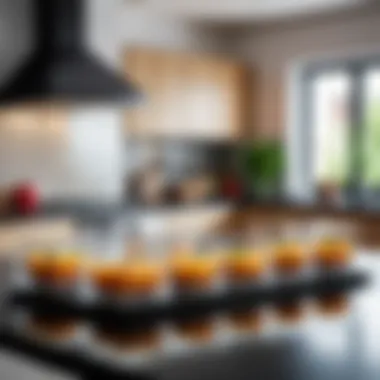

Small covers are often favored for convenience. Their size makes them easy to handle and store. Nonetheless, they may require multiple covers when preparing meals for larger groups. This could lead to inefficiency and increased workload in the kitchen. Thus, while they are beneficial for specific tasks, they have their limitations when considered for broader culinary applications.
Large Covers
On the other hand, large glass covers exceed the 22 cm measurement. These are suitable for oversized pots and platters, providing ample surface area for various large-scale cooking tasks. The key characteristic of large covers is their ability to trap heat for longer periods, making them advantageous for slow-cooked meals.
However, large glass covers can become cumbersome. Their size may cause awkward handling or storing issues, especially in smaller kitchens. Also, they may not be needed for everyday cooking, making them less versatile than the 22 cm option. Consequently, while they are beneficial for certain scenarios, they may not be the best fit for all cooking situations.
Functional Benefits of Glass Covers
The significance of glass covers in culinary practices cannot be overstated. Their practical benefits make them a staple in many kitchens, particularly those focusing on efficiency and sustainability. Understanding these benefits allows consumers to make informed choices when selecting glass covers.
Heat Retention
Heat retention is one of the primary advantages of using glass covers. When foods are prepared or cooked, maintaining their temperature is crucial for both safety and enjoyment. Glass covers, especially those made from borosilicate material, provide excellent insulation due to their thickness and design. This enables the heat to circulate properly, ensuring that meals stay warm longer.
For families, this means that meals can be prepared in advance without the need for constant reheating, preserving flavor and moisture. Especially during gatherings or busy weekdays, this aspect of heat retention helps reduce cooking time while also enhancing the overall meal experience.
Visibility and Monitoring
Another notable benefit is the visibility provided by glass covers. Their transparent nature allows for easy monitoring of the cooking process without removing the cover. This is particularly useful in baking or simmering, where temperature and moisture levels are important. Additionally, this visibility can prevent accidents and spills by allowing cooks to check the status of food at any stage.
For home cooks, this feature contributes to a more relaxed cooking environment. There is less worry about overcooking or burning food, allowing for improved culinary precision. The clear glass provides not only practicality but encourages engagement with the meal-preparation process.
Non-Reactivity with Food
Glass is inherently non-reactive, making it an ideal choice for food storage and preparation. Unlike some metals or plastics, glass does not leach chemicals into food, maintaining the integrity of the ingredients. When utilizing glass covers, you can be assured that flavors remain untainted and fresh. This non-reactivity is especially crucial in a household preparing various dishes that might have strong flavors or acidic components.
Using glass covers in such contexts promotes healthier eating habits. Families can instill a sense of confidence in their food choices when they know the materials in contact with their food are safe and reliable.
"By choosing glass covers, culinary enthusiasts embrace the essential values of health, efficiency, and sustainability."
Overall, the functional benefits of glass covers encompass vital aspects of cooking and food storage, making them indispensable in modern kitchens. Their capability to retain heat, provide visibility during cooking, and maintain a non-reactive surface demonstrates why they are sought after in various culinary settings.
Choosing the Right Glass Cover
Selecting a glass cover is not merely about aesthetics or price. The right choice impacts both functionality and longevity in your kitchen or culinary workspace. This section delves into critical factors that influence your decision when choosing the perfect 22 cm glass cover. Key aspects include material quality and design considerations. Each of these elements directly influences how effectively the cover serves its purpose while complementing your kitchen's style.
Material Quality
Material quality of a glass cover significantly determines its usability and durability. When it comes to glass covers, not all glass is created equal. Common materials include tempered glass and borosilicate glass.
Tempered Glass is treated through controlled thermal or chemical processes. This results in a product that is more resistant to shattering compared to regular glass. For practical purposes, tempered glass is a favored choice in many kitchens because it can withstand high temperatures, making it ideal for oven use.
On the other hand, Borosilicate Glass is known for its ability to handle rapid temperature changes. This type of glass is less prone to breaking when exposed to extreme heat or cold. For those who often move their glass covers from the oven to the refrigerator, borosilicate glass offers peace of mind due to its thermal resistance. While both materials offer benefits, your individual cooking habits should guide your choice based on frequency of heat exposure.
Design Considerations
Design plays a crucial role in function and aesthetic appeal. Key elements include the shape and the handles of the glass cover.
Shape
The shape of a glass cover can dramatically affect its utility. Round covers, for instance, are very common and easily fit over most round dishes. They distribute heat evenly and are optimal for retaining moisture, which is essential in many cooking methods.
However, square or rectangular shapes can provide better coverage for food with corners or edges, such as casseroles. This is a beneficial choice for those who often prepare larger meals. Moreover, the unique feature of a square cover allows for easier stacking, which is a notable advantage for compact storage. In sum, the right shape can enhance both cooking outcomes and storage efficiency.
Handles
Handles on glass covers may seem like a minor detail, but they can influence functionality greatly. Good handle design ensures safe and easy handling while transferring hot dishes. Ergonomic handles make lifting easier, reducing the risk of accidental burns.
Some glass covers feature silicone or rubber grips that provide additional safety. These materials help maintain a cooler temperature at the point of contact, which adds comfort and practicality. However, glass covers without handles can be more streamlined for storage, albeit at the cost of added maneuverability.
When selecting a cover, consider how often you will be using it along with the types of meals you prepare. Handles can enhance usability, especially in a busy kitchen.
Choosing wisely between material quality and design can lead to more effective cooking and easier storage.
Maintenance and Care
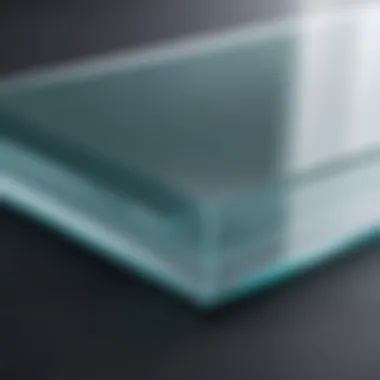

Effective maintenance and care are essential for ensuring the longevity and optimal performance of 22 cm glass covers. These practices not only preserve the aesthetic appeal of the covers but also maintain their structural integrity. Understanding how to properly care for glass covers contributes to a more functional kitchen environment.
Regular upkeep can prevent scratches, cloudiness, and other forms of damage that could impair usability. Awareness of cleaning methods, as well as preventative strategies against physical strain and heat exposure, can make a significant difference in the lifespan of these items.
Cleaning Techniques
Keeping glass covers clean is paramount. Food residues, grease, and dust can accumulate over time, affecting both appearance and hygiene. Here are effective cleaning techniques to maintain clarity and cleanliness:
- Soaking: Fill a basin or sink with warm water and mild dish soap. Allow the cover to soak for a few minutes. This loosens dirt and grime, making it easier to clean.
- Soft Cloth: Use a microfiber cloth to gently wipe the surface. This material is less abrasive and reduces the risk of scratching.
- Vinegar Solution: For stubborn stains, a mixture of equal parts vinegar and water can be sprayed on the surface. Leave it for a few minutes before wiping it away with a soft cloth.
- Avoid Abrasives: Stay away from harsh chemicals or abrasive pads. These can scratch the glass and alter its appearance.
Regular cleaning not only enhances the appearance but also ensures that the covers are safe for food use.
Preventing Damage
Preventing damage to 22 cm glass covers is equally important. Proper handling and storage can minimize the risk of breakage or chipping. Consider these strategies:
- Storage: Store glass covers in a stable location, avoiding places where they might be easily knocked over.
- Securing: When stacking glass covers, place padding between them to prevent scratches.
- Temperature Changes: Avoid exposing glass covers to sudden temperature changes, which can result in thermal shock. This is crucial, especially when transferring from a hot oven to a cold surface.
- Use of Appropriate Utensils: When removing food, use wooden or silicone utensils to avoid scratching the surface.
"By implementing proper maintenance and care, one can ensure that 22 cm glass covers remain a valuable asset in culinary settings for years to come."
In summary, both cleaning techniques and preventative measures are vital to effective maintenance and care of glass covers. With these practices in place, not only is the aesthetic maintained, but their functionality is preserved as well. Understanding these aspects leads to greater satisfaction in their use within the kitchen.
Economic Considerations
The economic implications of selecting 22 cm glass covers extend beyond the initial purchase price. Understanding these considerations requires a look at not just the cost of the products, but also the overall value they provide in the kitchen. In a busy home or professional setting, these glass covers serve multiple purposes that enhance both functionality and aesthetic appeal. Therefore, it is essential to evaluate how their usage can lead to significant savings over time, making them a wise investment.
Cost Analysis
When analyzing the cost of 22 cm glass covers, it's crucial to factor in several aspects. The price can vary significantly depending on the material quality, brand, and design. For example, tempered glass covers, which are more durable and resistant to thermal shock, might come at a higher initial cost compared to regular glass. However, this slightly increased expenditure can pay dividends in the long run through longevity and performance.
A few factors influencing cost include:
- Material Quality: Higher-grade materials like borosilicate glass tend to be pricier but offer better heat resistance and durability.
- Design Features: Covers with unique designs, such as those equipped with silicone seals or ergonomic handles, might carry a premium price, yet they often perform better.
- Brand Recognition: Well-established brands typically charge more based on their reputation for quality and reliability.
Weighing these elements allows consumers to make informed decisions. A thorough market analysis can also reveal discounts or promotions that further reduce costs.
Long-Term Savings
The selection of 22 cm glass covers should not only focus on upfront costs but also consider potential savings. Durable glass products can reduce the need for frequent replacements, which contributes to savings over time. When you invest in high-quality glass covers, you are likely investing in an item that will not crack or break easily, thus translating to long-lasting use.
Moreover, these covers assist in maintaining food freshness and reducing spoilage. Here are some savings-related benefits:
- Energy Efficiency: Using glass covers can minimize cooking times and conserve energy, leading to lower utility bills.
- Reduced Food Waste: With better storage solutions, food can last longer, which decreases the amount spent on groceries.
- Versatile Usage: These covers can be used in various cooking methods, including baking, microwaving, and storing leftovers, eliminating the need to buy separate items for each purpose.
In short, evaluating the total cost of ownership—factoring in durability, functionality, and food preservation—illustrates that 22 cm glass covers are economically sound choices.
"Investing in quality glass covers today can lead to significant savings tomorrow, both in terms of utility bills and reduced food waste."
By understanding these economic considerations, consumers can appreciate the value that glass covers bring to their culinary environment and make sound financial decisions.
Environmental Impact of Glass Products
The environmental impact of glass products is a crucial topic to understand, particularly when discussing 22 cm glass covers. As the world increasingly focuses on sustainability, it becomes necessary to evaluate how materials influence ecological health. Glass, known for its durability, has several advantages that can aid in reducing overall environmental footprints. This section delves into the sustainability of glass materials and the recyclability of glass covers.
Sustainability of Glass Materials
Glass is considered one of the more sustainable options among various packaging materials. Primarily, it originates from abundant natural resources such as sand, soda ash, and limestone. When produced, glass has low emissions compared to many plastics. Here are several compelling reasons explaining its sustainability:
- Long Lifespan: Glass covers, like the 22 cm variants, do not degrade over time as plastics can. This durability means fewer replacements are needed, leading to less waste.
- Non-Toxic: Unlike some other materials, glass is non-reactive and does not leach harmful chemicals, ensuring that it is safe for food storage.
- Energy Efficient Production: Although the initial manufacturing of glass requires significant energy, advances in technology have made glass recycling a much more energy-efficient process.
Sustainability is not just about the life cycle of the product but also its impact on consumers' choices. People today are opting for sustainable kitchenware as they become more informed about environmental issues. By selecting 22 cm glass covers, they not only ensure quality but also actively contribute to a greener planet.
Recyclability of Glass Covers
The ability to recycle glass is among its strongest environmental attributes. Most types of glass are fully recyclable, which reduces the need for raw materials for new products and lowers energy consumption in production processes. Here's how glass recycling works:
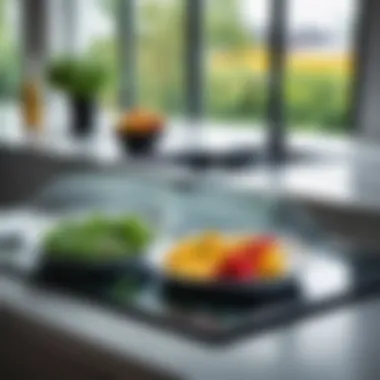

- Collection: Consumers can easily dispose of glass products through local recycling programs. Many municipalities provide clear guidelines on what glass can be recycled.
- Processing: Once collected, glass is transported to recycling centers where it is cleaned and sorted by color and type. Contaminants such as lids or labels are removed.
- Melting: The sorted glass is then melted at extremely high temperatures to form new containers or ornamental pieces.
"Recycling glass saves 30% of the energy required to make new glass from raw materials."
Due to its nature, recycled glass maintains its quality and can be reused multiple times without loss of purity. When consumers choose 22 cm glass covers, they support a lifecycle that minimizes waste and conserves valuable resources.
Innovative Uses of Glass Covers
The role of glass covers, especially those measuring 22 cm, extends far beyond their traditional purpose. In this section, we highlight how innovative applications can enhance their functionality, particularly in culinary practices and food presentation. These uses not only optimize food preparation and storage but also reflect a shift in modern cooking trends toward efficiency and style. As consumers increasingly seek versatile kitchen tools, understanding these innovative approaches becomes essential.
In Culinary Arts
In culinary arts, 22 cm glass covers serve multiple significant roles. Firstly, they act as a crucial barrier against contaminants while allowing visibility of the contents. This aspect is vital when preparing gourmet dishes, as it helps chefs monitor the cooking progress without lifting the lid, which can alter cooking times and temperatures.
Furthermore, using glass covers in the kitchen contributes to steaming and braising techniques. When placed over pots or pans, these covers help trap steam, creating a closed environment that promotes even cooking. This technique not only enhances flavors but also retains moisture in foods, resulting in better textures and taste. Additionally, the transparency of the glass allows chefs and home cooks alike to enjoy the visual appeal of their dishes as they cook.
Another benefit worth mentioning is the capacity of glass covers to withstand high temperatures, especially with materials like tempered glass. This makes them suitable for oven use, expanding their functionality beyond stovetop cooking to include baking and roasting applications. All of these factors combined illustrate the immense potential of 22 cm glass covers in enhancing culinary creativity.
In Food Presentation
The presentation of food is crucial, especially in the hospitality industry. Here, 22 cm glass covers have found a niche as essential tools in elevating food aesthetics. When presenting meals, these covers can enhance the visual allure of dishes, providing an elegant finish. Upon revealing the food, the act itself becomes an engaging experience, adding a sense of theatricality to dining.
In buffets or catering setups, glass covers provide a protective barrier while showcasing the food underneath. Their ability to maintain temperature while offering a clear view of the dishes is advantageous, helping customers make informed choices without compromising on freshness. Considerations such as the choice of design—whether sleek or ornate—can also play a role in branding for establishments.
To sum up, the innovative uses of glass covers in both culinary arts and food presentation represent a modern shift towards multi-functional kitchen tools. As the demand for ease and aesthetic appeal rises, 22 cm glass covers stand out as pivotal accessories in achieving culinary excellence.
"In the realm of culinary arts, presentation is paramount, and glass covers serve as the perfect blend of form and function."
The evolving landscape of cooking and serving continues to embrace these innovations, making them indispensable in modern kitchens.
Culinary Trends Influencing Glass Cover Designs
The landscape of culinary trends greatly impacts the design and functionality of glass covers, particularly the 22 cm varieties. Understanding these trends is essential for anyone looking to enhance their culinary experience, whether one is a professional chef or a home cook. The marriage between aesthetics and functionality becomes increasingly significant as consumers seek equipment that not only performs well but also complements the modern kitchen aesthetic.
Modern Kitchen Aesthetics
A modern kitchen is often characterized by clean lines, simplicity, and versatility. In this context, glass covers provide various visual benefits. They allow for seamless integration into minimalist designs, enhancing the appearance of food while maintaining a sleek look. The transparency of glass showcases the dish beneath, elevating the presentation and encouraging diners to engage with what is being served. The popularity of open kitchens also emphasizes this trend, as the glass cover can serve as a functional centerpiece, bridging both utility and style.
When choosing glass covers, consumers often prioritize design elements such as:
- Shape: Round or square covers can significantly impact the visual flow of the kitchen. \n- Handles: Stylish and ergonomic handles contribute to both convenience and aesthetic appeal.\n Incorporating modern kitchen aesthetics into glass cover design means balancing elegance with utility. This blend can appeal to people who value sophistication in their culinary tools.
Health Conscious Cooking
Another critical aspect of current culinary trends is the shift toward health-conscious cooking. This has led to a growing demand for products that promote healthier food preparation and storage methods. Glass covers, particularly in the 22 cm size, fulfill many of these needs. They are non-reactive, meaning that they do not leach chemicals into food, unlike some plastics. This ensures that the food prepared remains pure and free from potentially harmful substances.
Furthermore, many individuals seek to retain the nutritional quality of their meals. Glass covers are excellent for steaming vegetables or reheating meals without losing moisture and flavor. The benefits include:
- Capability to withstand high temperatures, making them suitable for various cooking methods.
- Easy visibility lets cooks monitor food without removing the cover, preserving heat and nutrients.\n As society becomes more health-conscious, the link between culinary practices and product selection strengthens. Glass covers resonate well within this trend, as they provide a safe, effective means of preparing and storing food while aligning with a more health-oriented lifestyle.
As culinary trends evolve, so do the designs and functionalities of kitchen tools, particularly glass covers, essential for any modern kitchen.
Final Thoughts on cm Glass Covers
Considering the multifaceted role that 22 cm glass covers play in both practical applications and aesthetic presentations in the culinary field, it is important to understand their significance. These glass covers serve not just functional purposes but also enhance the overall experience in food preparation and storage. They bridge the gap between utility and design, making them indispensable in modern kitchens.
Balancing Functionality and Style
When selecting glass covers, functionality must meet style. Functionality includes aspects such as durability, heat retention, and clarity. A quality cover effectively traps heat and moisture, preserving the integrity of the food. At the same time, a stylish design elevates kitchen aesthetics. Choosing a glass cover that complements kitchen decor is important. This consideration encourages incorporating glass products into meal presentations and everyday cooking tasks.
To achieve this balance, consider the following factors:
- Material Quality: High-quality borosilicate glass is often preferred for its thermal shock resistance.
- Design Elements: Look for sleek lines and a modern silhouette that appeal to contemporary tastes.
It is vital to choose covers that reflect personal taste yet serve practical needs.
Future of Glassware in Kitchens
The future for glass covers in kitchens looks promising. Increased consumer awareness around health and sustainability has spurred demand for products that are both functional and environmentally friendly. Glass covers check both boxes. They are non-reactive and safe for keeping food items fresh without introducing harmful chemicals. As more families become health-conscious and eco-aware, the role of glassware will only expand.
Factors shaping this future include:
- Advancements in Recycling Techniques: The recyclability of glass is likely to become a key deciding factor for many households.
- Innovative Designs: Expect to see new variations in shape and function, catering to diverse culinary styles.
- Smart Technology Integration: As kitchens evolve into more tech-advanced environments, glass covers may incorporate modern conveniences.
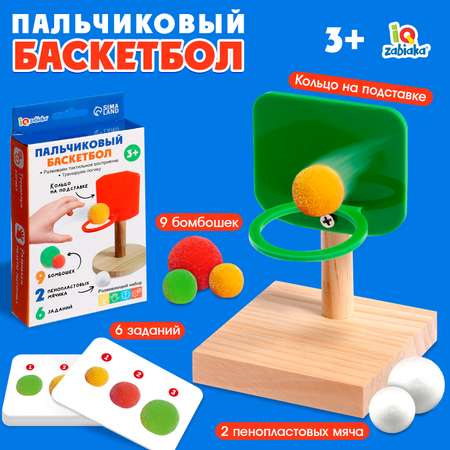
Развивающий набор IQ-ZABIAKA «Пальчиковый баскетбол»

Конструктор SLUBAN Армия «Боевой самолёт» 170 деталей

Пемза камень для ног и пяток 2 шт. педикюрная

Папка Sima-Land А4 с пеналом на молнии текстиль Минни Маус и единорог

Колготки с шортиками

Пушка водный Sima-Land





